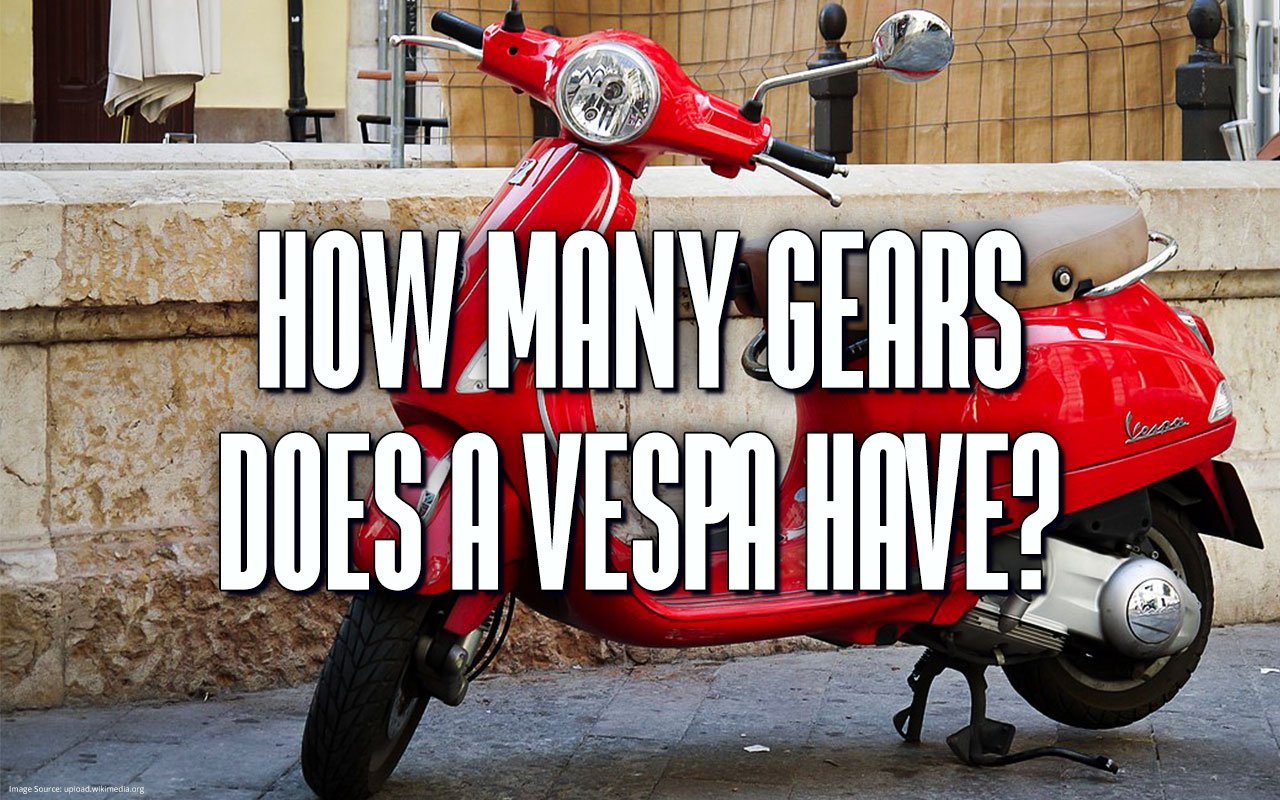
Vespa has three or four gears, depending on the model. This gearbox construction is still utilized by small and big-framed motorcycles. In this post, let’s speak about the gears on one of the most famous vintage motorcycles – the Vespa! Have you ever been wondering how many bags a Vespa has? Here’s everything you need to know.
A classic scooter with a timeless design is the Vespa, an example of excellent engineering on a scooter. The basic layout of its gearbox has been unchanged since 1944. It has three or four gears, depending on the model.
This gearbox construction is still utilized by small- and big-framed motorcycles and wide-body bikes. In this post, you’ll discover about Vespas, how they function, and their influence on modern pop culture.
Is a Vespa a Motorcycle?
Scooters and motorcycles are both two-wheeled motorized vehicles with engines.
When compared to scooters, riding a motorbike is typically more challenging. They’re generally more significant and faster.
On the other hand, Scooters are more fuel-efficient, simpler to drive, and less expensive!
Vespa scooters are made by Piaggio & C. SpA, an Italian motor vehicle company. The first design was patented in 1946. The flat floorboard, bulging front mudguard and splash protector, and enclosed covering on the motor of early Vespa scooters are well-known. This prototype has served as the basis for all subsequent Vespas, with only minor changes from model to model.
The Story of Vespa: How Did It All Begin?
Before World War II, the Piaggio family operated a plane manufacturing business. Rinaldo Piaggio, the company’s founder, and owner, created warplanes for Italy’s allies.
Due to the bombings, Italy’s industries were severely damaged afterward. The roads were in terrible condition. The country’s economy fell apart, and many manufacturing plants were destroyed, including Piaggio’s bomber plane plant.
Enrico Piaggio, a second-generation owner (Rinaldo Piaggio’s son), decided to divert the firm onto another route.
He imagined building two-wheeled automobiles that are inexpensive, reliable, and available to everyone in Italy who needs to travel about despite the poor state of their roads.
The Vespa was patented at the Central Office for Inventions, Models, and Makers of the Ministry of Industry and Commerce in Florence, Italy, on April 23, 1946. In December, the patent was granted.
The Vespa was initially introduced at the Milan Fair in 1946. Only 50 copies were sold during the promotion.
Vespa sales began to flourish when installment payments became popular in the country!
The Vespa Motorcycle Design
Enrico Piaggio’s engineers created a motorcycle with bodywork that encloses the drive train and a statuesque mudguard on the front in 1944. It has a handlebar control on the scooter’s handlebars. It was named MP5 (Moto Piaggio no. 5) after the shape of its handlebars. They dubbed it “Paperino” or “Donald Duck.” Enrico Piaggio is unimpressed with the design.
He then engaged the Corradino D’Ascanio, an aeronautical engineer, to improve the MP5.
It is continued his design with D’Ascanio’s extensive knowledge of creating lightweight aircraft frames. He had no preconceptions about how a motorcycle should look.
He used the spare parts available at the factory to his advantage.
D’Ascanio put the engine on the side of the back wheel and drove the wheel axle straight into the transmission in his design. This machine has a rod frame with tension-bearing metal outer panels, making it possible to construct a flat footrest.
Unlike the Paperino, this one does not have a central portion.
It had individual front suspension components, as well.
It has folding front and rear wheels. They were secured to dock axles, which included an extra spin.
MP6 is like the Paperino in design, with a tall splash guard on the front and controls straddled above the handlebars. It’s called the MP6 by authorities.
Enrico Piaggio exclaimed, “It looks like a Vespa!” when he saw the prototype. The engine’s noise and appearance are very similar to that of a wasp; hence it was dubbed “Vespa.” (In Italian, Vespa means “wasp.”)
The aerodynamic design is impossible to ignore.
The Vespa was also one of the first motorbikes to employ a single-shell construction, in which the body is an essential component of the chassis.
The Vespa Gearbox
The six-part gearbox in a Vespa consists of the following components:
- Crankshaft
- Clutch
- Primary Gear
- Christmas Tree Gears
- Individual Gears
- Output Shaft
This is a collection of elements with various purposes. The crankshaft is linked to the pistons. The layshaft is the support for the Christmas tree gears. These gears produce different speeds when you ride a motorbike or a scooter.
The input shaft and the Christmas tree gears are connected to the transmission’s gears. The Vespa’s transmission shaft is directly linked to the rear wheel. The following components are either starter or speed selectors:
The Vespa Gearbox has three fundamental components:
The Primary Drive
It’s the component that connects a tiny gear to the clutch drive plate. The intermediate equipment is connected to the input shaft and has circular-cut loads.
The Input Shaft
The input shaft has three or four gears combined into a single piece. It’s also known as a “Christmas Tree” component. The kickstart gear is at the end of this conduit.
Output Shafts/Separate Gears
These gears are connected to the input shaft, also known as the Christmas tree gear. A small selector selected a single pack. It is the final gear. An assembled cross securely fastens each gear turn to the revolving output shaft.
It’s firmly attached to the rear wheel. When the scooter is in motion, all of the components turn.
The output shaft is free to rotate while the input shaft drives only one gear at a time.
As the scooter’s rider squirms the grips on the bars, the metal cross travels up and down the turnout shaft.
How Does the Vespa run?
Kickstarter is what powers the engine. This will turn around the Kickstarter gear located on the layshaft.
When the engine starts up, the crankshaft spins the pistons, and with a spark coming from the spark plug, it begins to operate on its own.
The clutch connects to the cogs that drive the various gears once the engine has started.
Once a rider grasps the clutch lever on the handlebar, they can smoothly change gears, allowing the Vespa to run at different speeds.
Vespas in Modern Pop Culture
Vespas are quite well-known all around the world because of their distinctive style.
They are popular among city dwellers because of their flexibility and the growing parking difficulties for automobile owners they are extremely fashionable scooters, and people worldwide have begun restoring classic Vespa models!
These Vespas aren’t only famous in Europe and the United States, but they’re also exported to countries across Asia, particularly Thailand, Vietnam, and Indonesia.
In 1952, one of the most significant turning points in Vespa history occurred. Audrey Hepburn rode on Gregory Peck’s Vespa in the famous movie “Roman Holiday.” In the film, these two lovers rode Vespa on the streets of Rome. It resulted in a sales increase of 100,000 units!
Vespas were owned by many famous personalities, including Marlon Brando, John Wayne, Dean Martin, Abbe Lane, and others.
The Soviet Union reverse-engineered, replicated, and sold its own Vespa variant during the Cold War. It was a Vyatka. After the demonstrations by Piaggio, it was discontinued and unauthorized.







